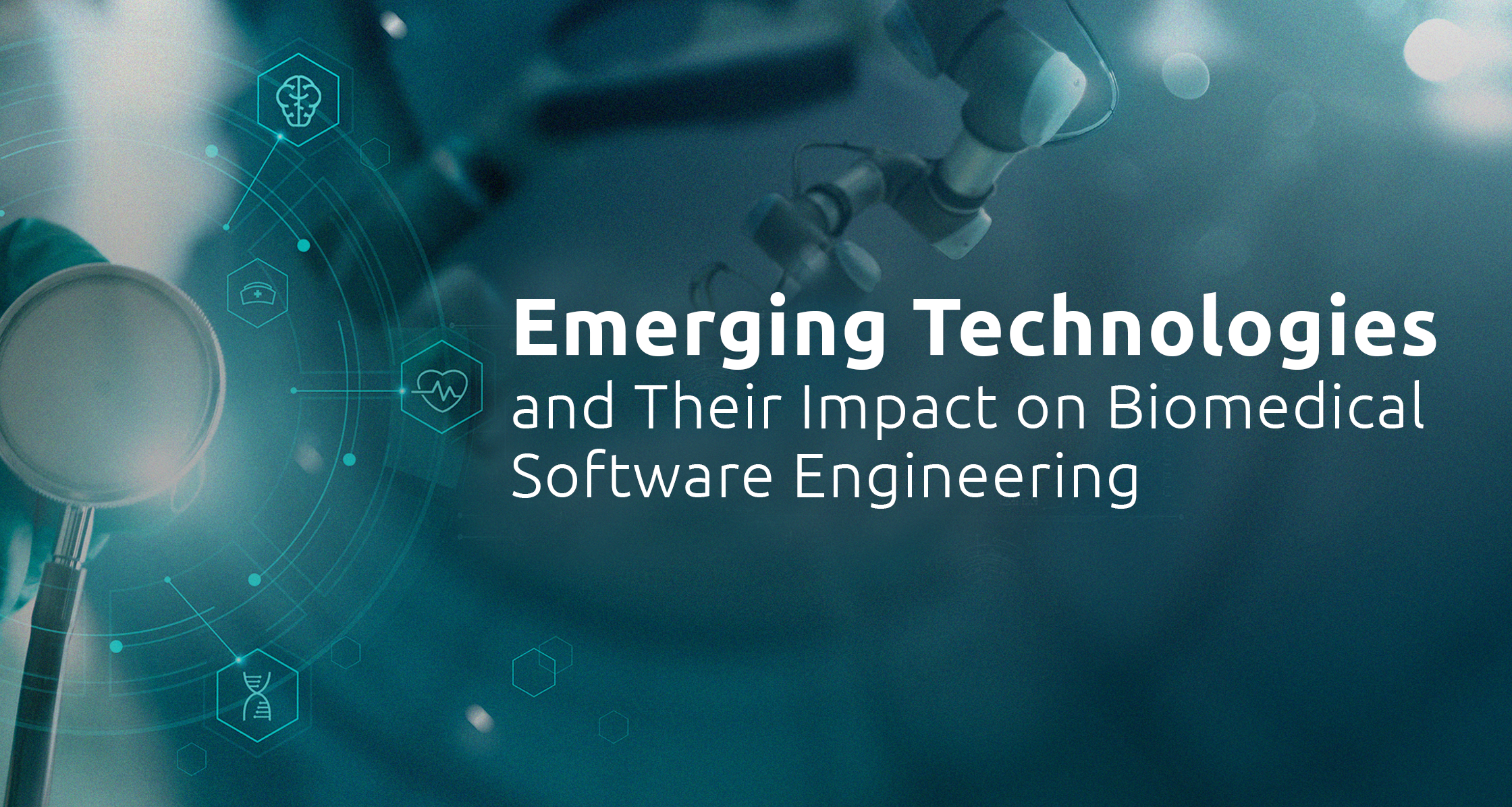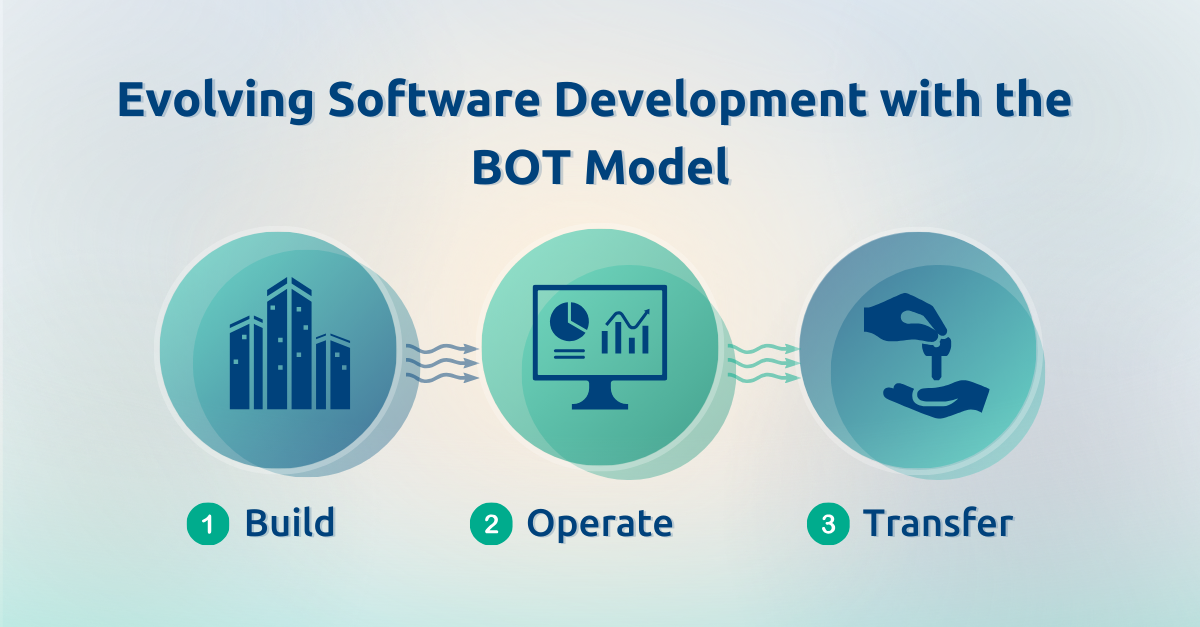
Emerging Technologies and Their Impact on Biomedical Software Engineering
May 25, 2023
The field of biomedical engineering is breaking headlines everywhere. Biomedical engineering is one of the most talked-about topics of our day, with discussions ranging from vaccines to virtual medicine. In fact, biomedical engineering has been identified as one of the industries with the highest growth, with a 27% increase in growth in recent years. And with a rapidly expanding industry and a number of fresh faces that are brimming with innovation, the globe is poised for dramatic change.
The world’s future is bright as fresh biomedical engineering breakthroughs appear every day. In this post, we present the latest trends in emerging technologies and their profound influence on the biomedical industry.
Statistical Biomedical Software Engineering Snapshot
Before delving into the transformative impact of emerging technologies, let’s take a glance at some statistical data that reflects the industry’s rapid growth and adoption of these advancements:
- According to a report by Grand View Research, the global healthcare IT market is expected to reach a value of $340.9 billion by 2027, with a compound annual growth rate (CAGR) of 15.9% from 2020 to 2027.
- The emergence of artificial intelligence (AI) in healthcare is projected to have a market value of over $45 billion by 2026, as estimated by a report from Global Market Insights.
The global market for medical imaging AI applications is anticipated to surpass $1.2 billion by 2025, with a CAGR of 26%.
Emerging Technologies in Biomedical Software Engineering
Now, let’s explore how these emerging technologies are reshaping the field of biomedical software engineering.
Wearable Medical Devices
Wearable medical devices have emerged as a powerful tool in the field of biomedical software engineering. These devices, equipped with sensors and connectivity features, offer real-time monitoring of vital signs, activity levels, and other health-related data. Let’s explore the impact of wearable medical devices on personalized healthcare:
Continuous Monitoring and Early Detection
Wearable medical devices have made it possible to monitor vital signs, including heart rate, blood pressure, blood glucose levels, and sleep patterns, among others, continuously and non-invasively. Certainly, this continuous monitoring allows for early detection of abnormalities and prompt interventions, reducing the risk of complications. Furthermore, healthcare professionals are able to access the data remotely, enabling personalized care and timely interventions.
Patient Empowerment and Self-Management
Wearable medical devices empower individuals to take an active role in managing their health. Through data tracking and analysis, users gain insights into their activity levels, sleep quality, and overall well-being. Moreover, these devices provide personalized recommendations, encouraging users to make healthier choices and engage in proactive self-management.
Integration with Electronic Health Records (EHRs)
Wearable devices seamlessly integrate with electronic health records, enabling healthcare professionals to access and analyze patient data in a centralized manner. This integration enhances care coordination, facilitates data sharing between healthcare providers, and ensures a holistic view of the patient’s health status. By incorporating wearable device data into EHRs, healthcare teams make well-informed decisions and provide comprehensive care.
Tissue Engineering
In the realm of biomedical engineering, tissue engineering has emerged as a groundbreaking field that aims to create living tissues and organs using biologically active cells. The integration of tissue engineering with biomedical software engineering has the potential to revolutionize healthcare and personalized medicine. Let’s explore the impact of tissue engineering on the field:
Regenerative Medicine and Organ Transplantation
Tissue engineering offers a promising solution to the growing demand for organ transplants. By utilizing biologically active cells and scaffold materials, researchers create artificial tissues and organs that closely mimic their natural counterparts. Correspondingly, biomedical software engineering plays a crucial role in designing and optimizing the manufacturing processes involved in tissue engineering, such as 3D bioprinting and cell culture. This integration enables the production of functional tissues for transplantation, reducing the reliance on donor organs and addressing organ shortages.
Customized Implants and Prosthetics
The ability to engineer living tissues opens up new possibilities for the development of customized implants and prosthetics. Biomedical software engineering facilitates the design and fabrication of patient-specific implants that seamlessly integrate with the surrounding tissues. This customization ensures better fit, improved functionality, and enhanced patient comfort. By leveraging advanced imaging techniques and computer-aided design (CAD), biomedical engineers can create precise models for the production of personalized implants and prosthetics.
Surgical Robots and Nanorobots
In recent years, the integration of surgical robots and nanorobots in biomedical engineering has revolutionized the field of surgery. These technologies have significantly enhanced precision, accuracy, and minimally invasive procedures, leading to improved patient outcomes. Let’s see the impact of surgical robots and nanorobots in biomedical software engineering:
Surgical Robots
Surgical robots are advanced systems that assist surgeons in performing complex surgical procedures with enhanced precision and dexterity. These robots are controlled by surgeons through a console, translating their movements into precise robotic actions. The synergy between biomedical software engineering and surgical robotics has several benefits:
- Increased Precision: Surgical robots offer improved accuracy and precision compared to traditional surgical techniques. Biomedical software engineering enables the development of algorithms and software interfaces that translate surgeon’s movements into precise robotic actions, minimizing the risk of human error and enhancing surgical outcomes.
- Minimally Invasive Procedures: Robotic-assisted surgery enables minimally invasive procedures, where smaller incisions are made, resulting in reduced trauma, shorter recovery times, and less scarring for patients. Biomedical software engineering plays a vital role in creating intuitive user interfaces, real-time imaging integration, and surgical planning software that optimize robotic-assisted surgeries.
- Telesurgery and Remote Procedures: With the integration of surgical robots and high-speed network connections, it becomes possible for surgeons to perform procedures remotely. Biomedical software engineering ensures secure data transmission, low-latency communication, and precise control of robotic systems, enabling expert surgeons to provide their expertise in remote or underserved areas.
Nanorobots
Nanorobots are tiny robotic devices that operate at the nanoscale, performing specific tasks within the human body. These devices have the potential to revolutionize healthcare by enabling targeted drug delivery, precise diagnostics, and minimally invasive procedures. Biomedical software engineering plays a vital role in nanorobotics:
- Targeted Drug Delivery: Nanorobots are designed to deliver medications to specific locations within the body with precision. Biomedical software engineering aids in the development of algorithms and software interfaces that allow precise control and navigation of nanorobots through the intricate pathways of the body, ensuring targeted drug delivery and reducing side effects.
- Intraoperative Imaging and Guidance: Biomedical software engineering contributes to the integration of nanorobots with imaging technologies, enabling real-time visualization and guidance during surgical procedures. This integration facilitates accurate navigation of nanorobots within the body, ensuring precise targeting of diseased tissues or cells.
- Diagnostic Capabilities: Nanorobots equipped with sensing capabilities can detect and analyze specific biomarkers or abnormalities within the body, aiding in early disease detection and diagnosis. Biomedical software engineering assists in the development of algorithms for data analysis, pattern recognition, and decision support, enhancing the diagnostic accuracy and efficiency of nanorobots.
Emerging technologies are revolutionizing the field of biomedical software engineering, empowering researchers, clinicians, and biomedical companies to achieve remarkable advancements in healthcare.
These advancements have ushered in a new era of personalized medicine, improved surgical precision, and enhanced patient outcomes. Biomedical companies must embrace these technologies and invest in robust software engineering solutions to leverage their potential fully. Need an A+ team of experts? Get in touch with us.
About ITJ
ITJ is devoted to serving fast-growing and high-value market sectors, particularly the Internet of Medical Things (IoMT), working with innovative medical device companies looking to improve people’s lives. With a unique BOT (build, operate, and transfer) model that sources only the best digital talent available, ITJ enables companies in the US to create technology centers of excellence in Mexico. For more information, visit www.itj.com.

